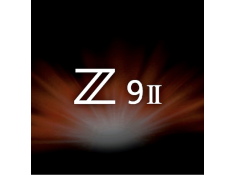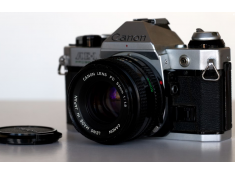What is digital camera: digital camera vs analog camera
Tuesday 18 November 2025
 26
26
 Reproduction without the author's authorization is prohibited
Reproduction without the author's authorization is prohibited

The term "digital camera" wasn't used to define a specific device, but rather to distinguish it from something that wasn't film.
In the 1980s and early 2000s, the de facto standard in the photography industry was the film camera. So when electronic imaging began to emerge, people had no idea what to call these machines: they weren't like film cameras, but they were still quite primitive. Therefore, the market and manufacturers used the most obvious and easily understood point for consumers—the imaging method had changed.
Thus, the name "digital camera" appeared, its subtext being:
"This is a camera that doesn't need film."
What do we mean when we say "digital camera" today?
The meaning of the term "digital camera" has shifted significantly today, but it still retains some historical inertia. Now, "digital camera" generally doesn't refer to all digital imaging devices, but rather:
Standalone photographic devices with interchangeable or fixed lenses, not mobile phones, specifically designed for taking photos or videos.
In the current context, it basically implies several conditions:
Standalone device
Not a mobile phone, not a tablet, not a computer webcam.
Although they also produce digital images, no one would call an iPhone a digital camera.
Machines specifically designed for photography/videography
Including mirrorless cameras, SLRs, compact cameras, telephoto cameras, and professional camcorders.
Recording images using digital sensors
"Digital" still refers to the "sensor + storage medium" concept.
In other words, "digital camera" is now more of a product category name than a technology category name. The comparison to "film camera" still exists, but mobile phones have diluted much of the original meaning of "digital camera."
What do we mean when we say "analog camera" today?

Today, when people talk about "analog camera," they almost always mean film camera—the kind of device that "uses film as the recording medium and obtains images through chemical development." This usage carries a strong sense of the times because "analog" is originally a term from electrical engineering, meaning "analog signal," not specifically used to describe film photography. Technically speaking, film is a chemical process, not an analog electronic signal; and digital cameras do indeed have analog components in their sensors and analog signal chains. Therefore, the term "analog/digital" is inherently imprecise within the technical framework of photography. However, language doesn't prioritize technical rigor; it prioritizes dissemination and culture. Driven by the internet, the film revival, and niche subcultures, people like to use "analog" to contrast with "digital," viewing "analog camera" as a symbol of an "anti-digital" and "anti-smartphone" lifestyle. Therefore, now, "analog camera" is basically a colloquial term for "film camera": including 35mm, 120, medium format, large format, and even instant cameras. Whether or not it has electronic metering, autofocus, and a film advance motor inside, these features don't change the fact that it's called an analog camera, because the key point is: image formation relies on film, not a digital sensor.
Simply put, the current analog camera is more of a cultural concept than a technical one. Technically, it's a film camera; culturally, it symbolizes a retro, slow-paced, and anti-smartphone photography style.
Statement: all contents and remarks made by K&F CONCEPT 's intranet friends only represent themselves and do not reflect any K&F CONCEPT 's opinions and views.
-
 The Sony A7M5 camera is highly likely to feature a new image sensorMonday 17 November 2025
The Sony A7M5 camera is highly likely to feature a new image sensorMonday 17 November 2025 -
 Sigma Publishes Patents for 24mm F1.2 and 28mm F1.2 LensesFriday 14 November 2025
Sigma Publishes Patents for 24mm F1.2 and 28mm F1.2 LensesFriday 14 November 2025 -
 Latest Spy Photos of the Sony A7M5Thursday 13 November 2025
Latest Spy Photos of the Sony A7M5Thursday 13 November 2025 -
 Phase One Releases 30th Anniversary Edition IQ4 150MP Digital BackTuesday 11 November 2025
Phase One Releases 30th Anniversary Edition IQ4 150MP Digital BackTuesday 11 November 2025 -
 Will the Nikon Z9 Ⅱ not be released this yearWednesday 05 November 2025
Will the Nikon Z9 Ⅱ not be released this yearWednesday 05 November 2025







